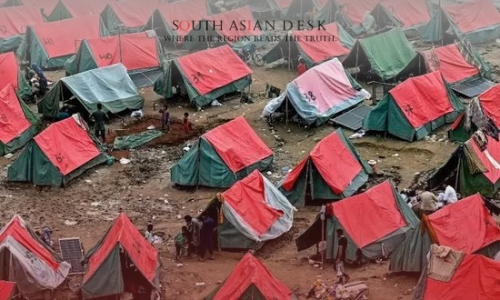Crises continue to increase as a result of worst flood in Punjab, displacing millions and threatening urban areas. On Tuesday, September 2, 2025, Punjab, Pakistan, battled its worst flood in Punjab history, with the Chenab, Ravi, and Sutlej rivers at “exceptionally high” levels, displacing over 2.4 million people due to heavy rains and India’s water releases.
The worst flood in Punjab threatens Pakistan’s breadbasket, impacting agriculture, infrastructure, and regional stability, while highlighting cross-border water management challenges under the Indus Waters Treaty.
Escalating Flood Crisis in Punjab
Punjab is grappling with its worst flood in Punjab history, as the Chenab, Ravi, and Sutlej rivers surged to “exceptionally high” levels on Tuesday, September 2, 2025. The Provincial Disaster Management Authority (PDMA) reported that over 2.4 million people and 600,000 livestock have been displaced, with 41 deaths recorded. The crisis, exacerbated by heavy monsoon rains and India’s release of water from the Harike and Ferozepur headworks, has inundated 3,100 villages and 2,900 hamlets across the province.
Rising River Levels and Urban Flood Risks
The Chenab River at Trimmu recorded an outflow of about 532,498 cusecs as of early September 2, classified as “very high,” with projections indicating levels could reach nearly 700,000 cusecs. The Ravi River at Balloki Headworks stood at 144,675 cusecs, and Sidhnai Headworks was at 105,604 cusecs, both labeled “very high.”
The Sutlej River at Ganda Singh Wala remained at an “exceptionally high” level, with 253,068 cusecs. The PDMA warned of urban areas are in risks after flood in Punjab, including Lahore, Gujranwala, and Gujrat due to expected heavy rainfall through September 3. Updated river flow data from the Flood Forecasting Division confirms these levels and notes that flood flows are expected to persist at “very high to exceptionally high” levels across all three rivers through September 4.
PDMA Director General Irfan Ali Kathia stated, “Punjab is facing the biggest flood in its history, with the ninth spell of monsoon predicted to bring more rain over the next two days.” He noted that timely decisions have saved lives, with Rescue 1122 conducting its largest-ever operation, evacuating over 900,000 people.
India’s Water Releases Intensify Crisis
India’s High Commission informed Pakistan on Sunday, August 31, 2025, at 10:00 AM PKT of high flood levels at Harike and Ferozepur, impacting downstream areas, according to the Pakistan Commission for Indus Water on X. Northern India’s heavy rainfall in Uttarakhand, Himachal Pradesh, Haryana, and Punjab is expected to worsen river flows over the next 36 hours. Punjab Information Minister Azma Bokhari described the water releases as creating “extraordinary circumstances,” necessitating robust rescue and relief efforts.
The PDMA highlighted that India provided data only for the Sutlej, with no details on other rivers, complicating flood management.
Relief and Rescue Operations
The provincial government has established 390 relief camps, 351 medical units, and 321 veterinary facilities to support displaced families and livestock. Multan Commissioner Aamir Karim Khan reported that 450,267 people and 468,284 animals have been relocated. Authorities are preparing for potential controlled breaches at Safora and Head Muhammad Wala, which could affect around 14 and 16 villages respectively, to protect critical infrastructure. As of September 2, 2025, no controlled breaches have been executed yet. Officials are on standby to authorize breaches—including strategic use of explosives or embankment cuts—if floodwaters pose a significant threat to populated areas such as Multan.
A senior official, speaking anonymously, emphasized, “The water has passed central Punjab’s major population centres, but the true test is now at Panjnad and beyond. We are monitoring it minute-by-minute.”
Background
Punjab, Pakistan’s most populous province and agricultural hub, relies heavily on the Chenab, Ravi, and Sutlej rivers, governed by the 1960 Indus Waters Treaty between India and Pakistan. The treaty allocates control of these rivers to Pakistan, but upstream releases from India during monsoons often exacerbate flooding. The current floods, described as the worst since 1988, have caused widespread crop destruction and infrastructure damage, threatening food security.
What’s Next
The worst flood in Punjab is expected to intensify as floodwaters converge at Panjnad by September 5, 2025, with up to 1 million cusecs projected, requiring sustained relief efforts and cross-border coordination.
Published in SouthAsianDesk, September 2nd, 2025
Follow SouthAsianDesk on X, Instagram, and Facebook for insights on business and current affairs from across South Asia.






